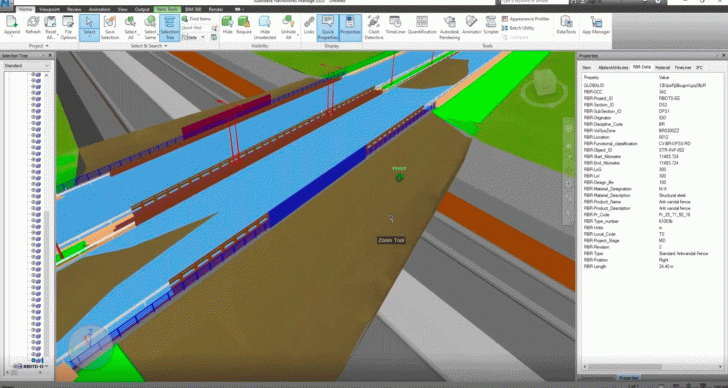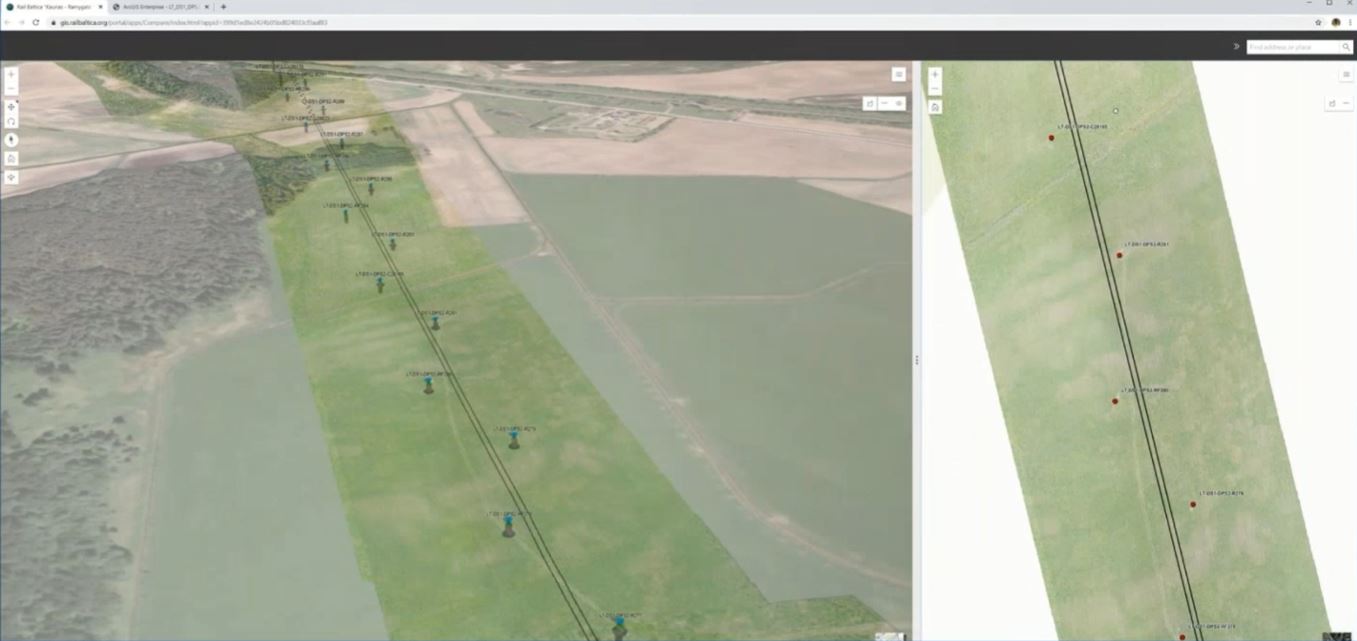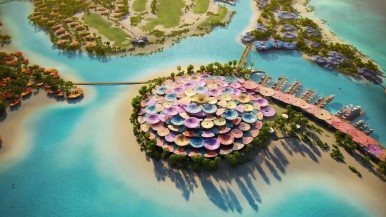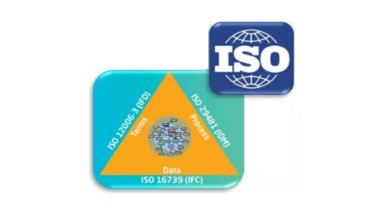Zigurat Global Institute of Technology
Blog / BIM & Construction Management
BIM in the Largest Baltic-Region Infrastructure Project: the Case of Rail Baltica
Categories

Today’s post is dedicated to a project that once finished will have a deep and long-term impact on the way people live and move between the three Baltic States and beyond. Yes, we will take a closer look at Rail Baltica, the infrastructure project that will make it possible to travel the whole of Europe by train. In this task, we rely on the testimony of Raitis Busmanis, the Head of the Virtual Design and Construction Department for the project.
Rail Baltica is, in many ways, a symbolic project for the three Baltic States. It has been widely talked about since the 90s, following the collapse of the Soviet Union and the Iron Curtain that finally permitted the countries previously in the east of this boundary to connect freely with the West.
So, when finally executed, the new Rail Baltica will carry the symbolic weight of reconnecting Estonian, Latvian and Lithuanian railways with Europe. Reconnecting because, before the Second World War, the Baltic States were connected to other European countries with 1435 mm wide tracks. But with the Soviets also came their 1520 mm Soviet gauge. Up until recently, this 1520 mm gauge system has made it difficult and also expensive to interconnect the three countries through Poland with the rest of the European countries.
In 2003, the European Commission added Rail Baltica to its priority list and, in 2004, it also made it to the Trans-European Transport Network (TEN-T) priority list. In the 2014-2020 budget period, Rail Baltica is 85-percent funded by the EU. It is estimated that once finished, by 2030, it will carry about 5 million passengers and 16 million tons of cargo annually. To better grasp the dimension of the project, there are some numbers about Rail Baltica:
 *Currently in design phase, two more sections will be added later.
*Currently in design phase, two more sections will be added later.
Rail Baltica BIM Implementation Overview
The Rail Baltica project is initially to be completed by 2026. Therefore, we can currently speak about how BIM has been implemented up until now and what the team has learned along the way. A few weeks back, we had the privilege of hosting a masterclass where Raitis Busmanis, the Head of the Virtual Design and Construction Department of RB Rail AS, shared with wider audiences their perspective and why the use of BIM was mandatory in their tenders.
RB Rail AS works on this project with many different consultants, designers, etc. who all have a different approach. Requiring BIM implementation in their tenders allows RB Rail Baltic to check and verify their work on the go and, more importantly, make sure that all the information gathered during the design phase is “recorded” somewhere and can be used later for asset management. This means that the benefits of their current workflows will also manifest themselves for the longest period of the asset life-cycle.

BIM and GIS. Geotechnical investigation results as an example (Rail Baltica presentation) The team of Raitis has come quickly a long way, proposing a BIM Manual and a detailed set of rules for the designers. The project follows the IFC standards set by BuildingSMART. For stations, the building standard. The Rail Baltica BIM Framework document also states that IFC alignment, IFC bridge, IFC tunnel and other future civil-related IFC formats will be adopted by the BIM Strategy as soon as they are mature enough for their implementation. That way as the project progresses it would be possible to deliver this data in IFC or other ‘Open’ data file formats. From the very beginning, they have considered the Common Data Environment (CDE) the backbone of Digital Rail Baltica and that has made it possible for the project to come together so quickly.
Designing for the Whole Life Cycle: First Results
RB RAIL AS as the client procures the design from different companies and has established 4 stages of design that they must follow after winning the tender for the contract. The common element throughout this phase is to make sure that all the information gathered can be reused later for asset management. The four stages of design are: Site Investigation includes geotechnical investigations, topographical surveys, laser-scanning, and hydrologic studies among other processes. This stage is important for the designer to understand the conditions of the surroundings.
As an example of site investigation, Raitis showed LIDAR data that captured the existing situation and is used in addition to topographical surveys. It can be used to generate a DTM (Digital Train Model), based on which all the embankments and cuts for the railway line, the quantities for excavations and other volumes can be created. We can reuse technical investigation as supplementary data for BIM models or in GIS environments.
The Value Engineering stage is when the designer has to come up with the best proposal and they will go over the preliminary design with the consultant to define the best option in the given circumstances from the point of view of MCA, CAPEX and OPEX. The main goal here is to always keep in mind how the railway will be operated in the future and finding the best approach in the long run. This would include the target value of LOD 200.

Tallinn - Rapla. Value Engineering (Rail Baltica presentation) Master Design comes after we have chosen the best option to go with. In this stage, the designer works on the exact design solution that would be the basis for the construction tender processes. This would include the target value of LOD 300. Due to the local legislations, Detailed Technical Design is in case of Rail Baltica the task of the designers. This design would be the one on which the constructor will base the building. This would include the target value of LOD 400.
About BIM and Digital Twins from the Clients Perspective
On the final note, Raitis Busmanis talked about what they as the client have learned from the whole process. He feels that if they had set the requirements in a clearer way, many of the challenges they are facing now could have been avoided. Task Information Delivery Plan (TIDP) and BIM execution plan (BEP) should correspond to BIM EIR and be agreed upon in the inception phase and then updated frequently. He also underlines that the client can’t just demand BIM for the sake of it.
The client must have its own team that knows what has to be delivered and can follow up on that. Raitis ended his presentation by saying that BIM is not alone and that it is a part of a bigger digitalization picture that wouldn’t be complete without GIS, for example. He also insisted on a more holistic approach and keeping in mind that AIM (Asset Information Model) will have important long-term benefits for all the stakeholders.




